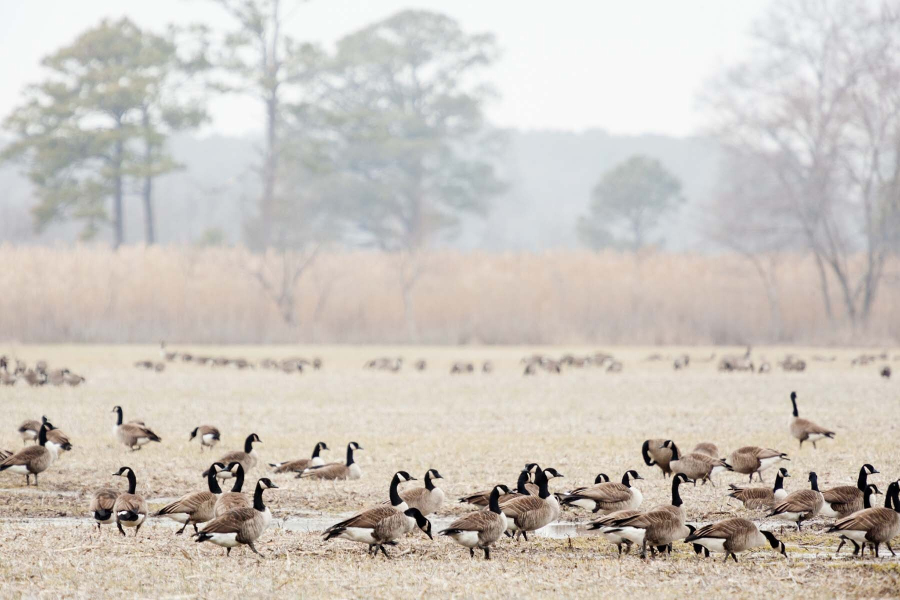Maryland’s wintering waterfowl population down slightly in 2016
Unusually warm weather delays migration of Canada geese, other waterfowl

Warm weather may have delayed waterfowl migrations to Maryland’s Chesapeake Bay shoreline and Atlantic coast, according to the results of Maryland’s 2016 Midwinter Waterfowl Survey. While experts from the Maryland Department of Natural Resources (DNR) and the U.S. Fish and Wildlife Service (USFWS) counted more diving ducks in their aerial surveys than in 2015, fewer dabbling ducks, geese and swans were observed.
According to a DNR release, abnormally warm weather in the eastern United States delayed the migration of waterfowl to the Chesapeake region, resulting in an overall waterfowl count of 663,000—lower than last year’s 855,000 birds and below the five year average of 759,460.
This year’s total included 69,800 dabbling ducks (a decrease from 90,800 in 2015) and 246,000 diving ducks (up from 192,000 in 2015). The increase in diving ducks can be attributed to teams observing more scaup and ruddy ducks, particularly along the Chester River and the Bay’s shoreline in Calvert County. Survey teams also observed dramatically smaller numbers of Canada geese: 293,800, or 42 percent fewer than were counted in 2015.
The USFWS Division of Migratory Bird Management pools these survey results with those from other states to get a sense of the distribution and population size of waterfowl wintering along the Atlantic Flyway, the migration route that follows the Atlantic coast of North America.
Learn more about the Midwinter Waterfowl Survey.

Comments
There are no comments.
Thank you!
Your comment has been received. Before it can be published, the comment will be reviewed by our team to ensure it adheres with our rules of engagement.
Back to recent stories